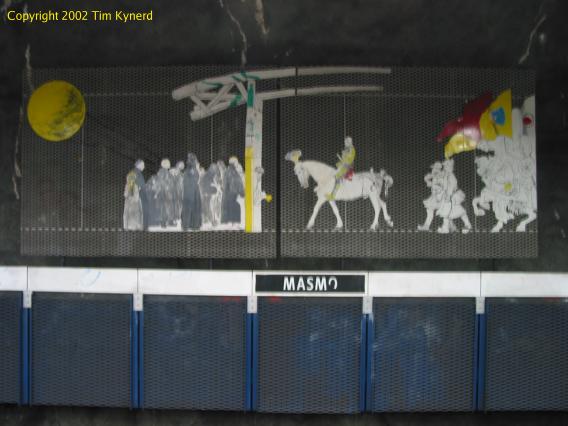
Masmo was opened on 1 October 1972. It was the first "grottstation" ("cave station") in Stockholm, using a treatment that would later characterize large portions of the Stockholm subway, including all of Tub3 (blue lines): rather than constructing the station as an underground concrete box or vault, the stations were blasted out of rock in the usual way, but the shape of the remaining rock determined the contours of the station. The rock was sprayed with concrete to achieve a different texture and to help protect against leaks and collapse. Here, as at stations like Tekniska högskolan and Stadion, panels of metallic mesh were used to create a partial sense of more conventional walls. In the Tub3 stations, which came later, this idea was abandoned and the concrete-sprayed rock walls were the only walls.

(18 September 2002)
From the platform, on the northbound track wall, we see part of a work of art called "Ta ner solen i tunnelbanan" ("Take the sun down into the subway"), by Staffan Hallström and Lasse Andréasson. The art is mounted on metallic mesh of the kind I mentioned above.
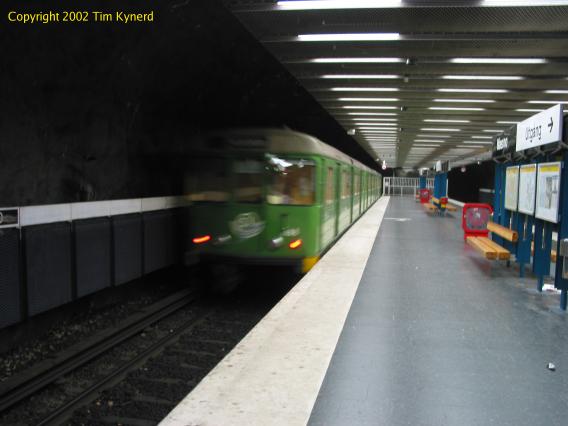
(18 September 2002)
A northbound train departing Masmo.
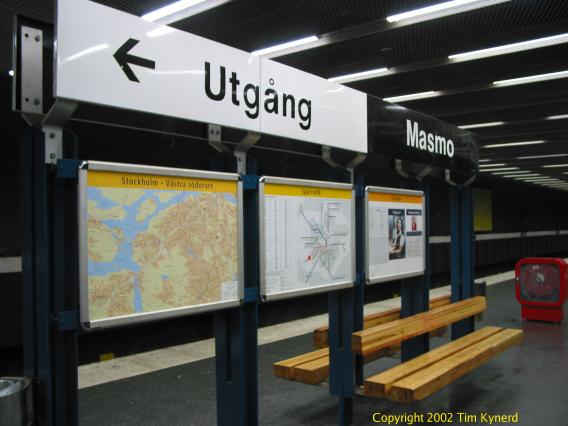
(18 September 2002)
A station sign and information display at Masmo.
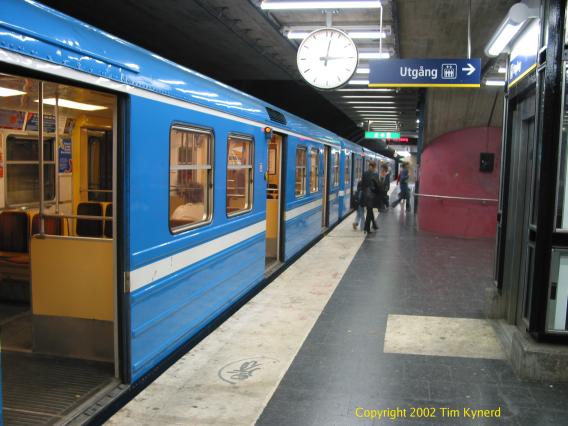
(18 September 2002)
A northbound train stopped at Masmo. Note also that these photos have now shown three different typefaces used at Masmo: on the station name signs mounted on the track wall (first photo above), the original SL-grotesk typeface from 1955; on the platform station name signs (photo immediately above), the awful Helvetica variant SL adopted in the 1980s (and is now abandoning); here, the elevator sign is executed in Transit, a typeface introduced by Connex, the current operator of the subway service; Transit, as I understand it, comes from Berlin.
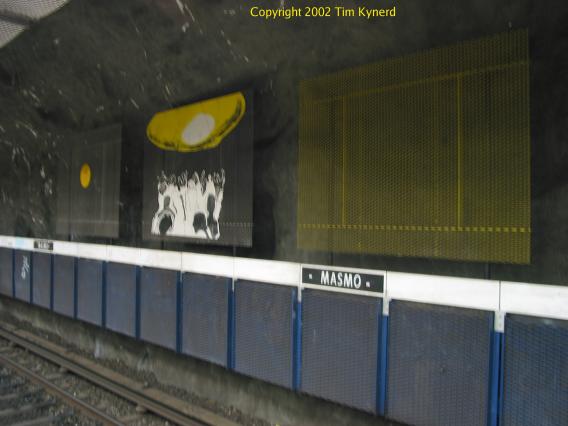
(18 September 2002)
More of "Ta ner solen i tunnelbanan" on the northbound track wall.
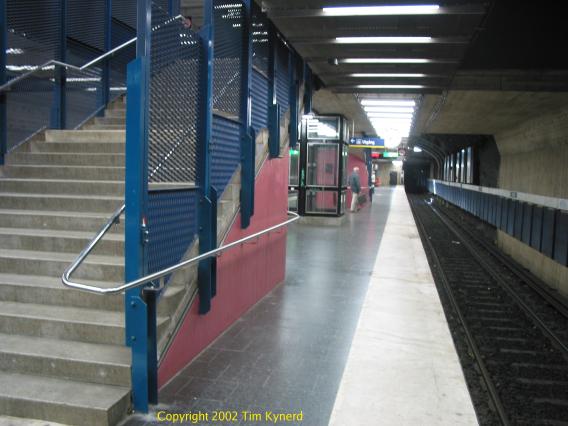
(18 September 2002)
The center of the platform, with the stairways up to the ticket hall. The pink color used here is very similar to that used in Hallonbergen; it reminds me of Pepto-Bismol, and I can't understand why it gets used in the subway. But anyway.
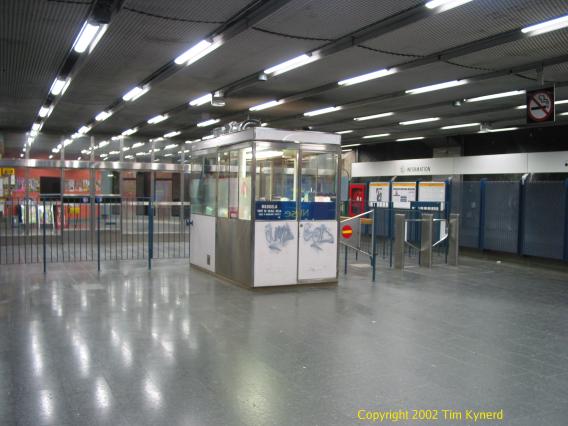
(18 September 2002)
The ticket hall, from inside the paid area. This is a very old-fashioned ticket booth, and I'm sure it's scheduled for replacement sometime soon, as Connex has been rebuilding these things apace.
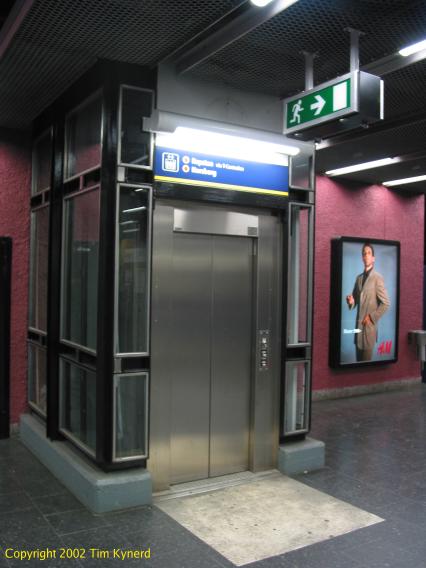
(18 September 2002)
In the ticket hall, the elevator down to the platform, and another sign using Transit.
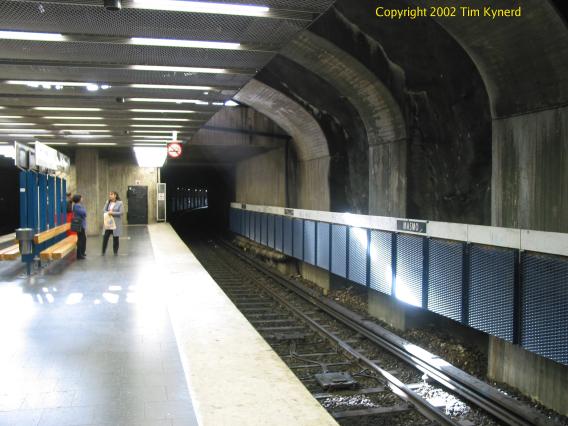
(18 September 2002)
At the south end of the station, the cavelike impression the whole station makes is interrupted by a ray of sunshine. You can also tell that the line is out in the open a short distance beyond the station.
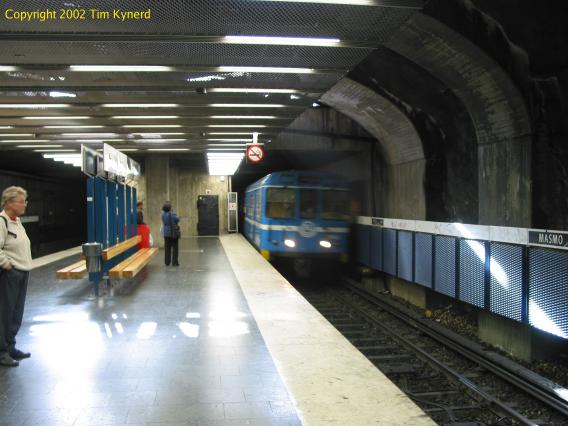
(18 September 2002)
The same view as the previous photo, with a northbound train arriving.